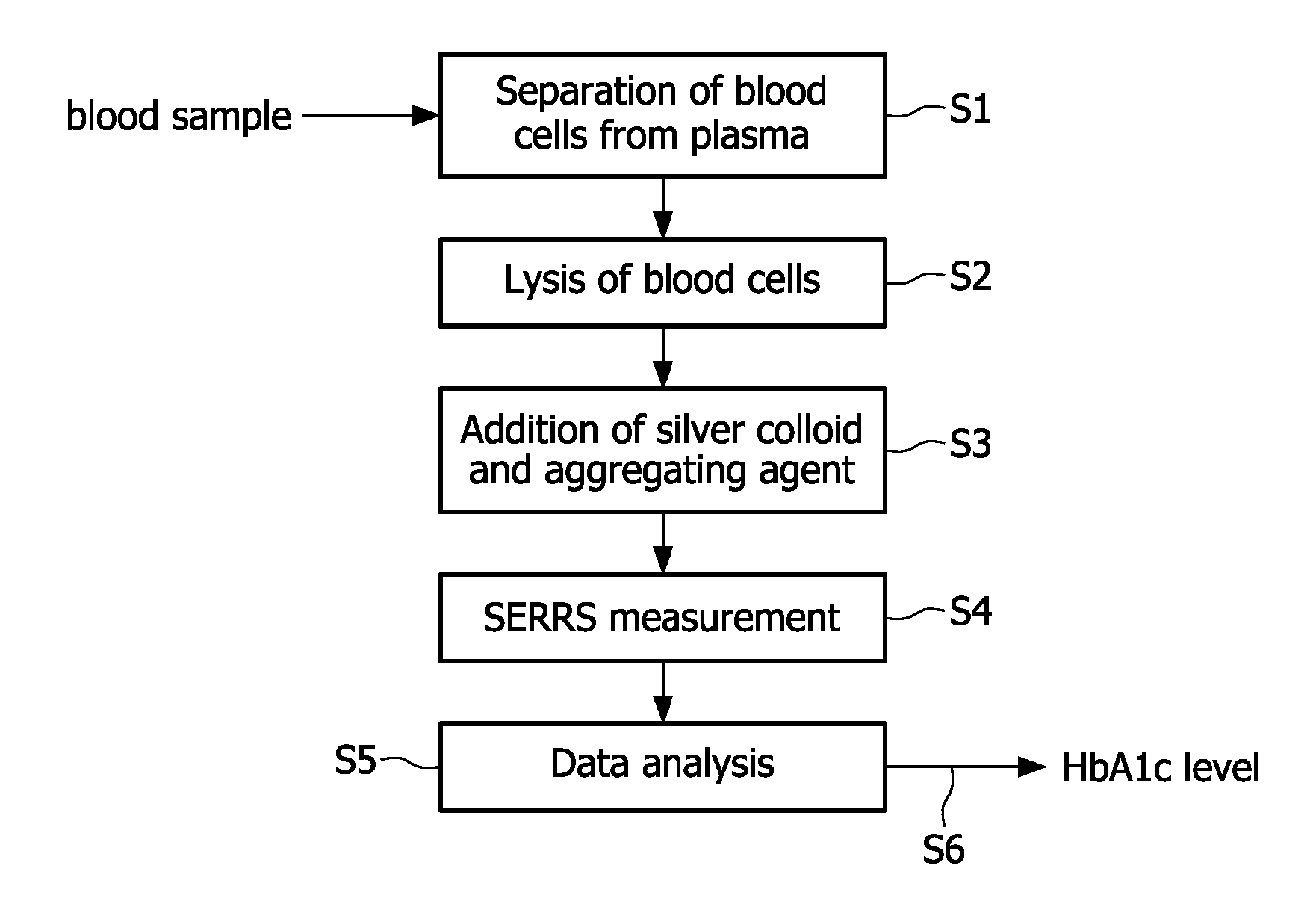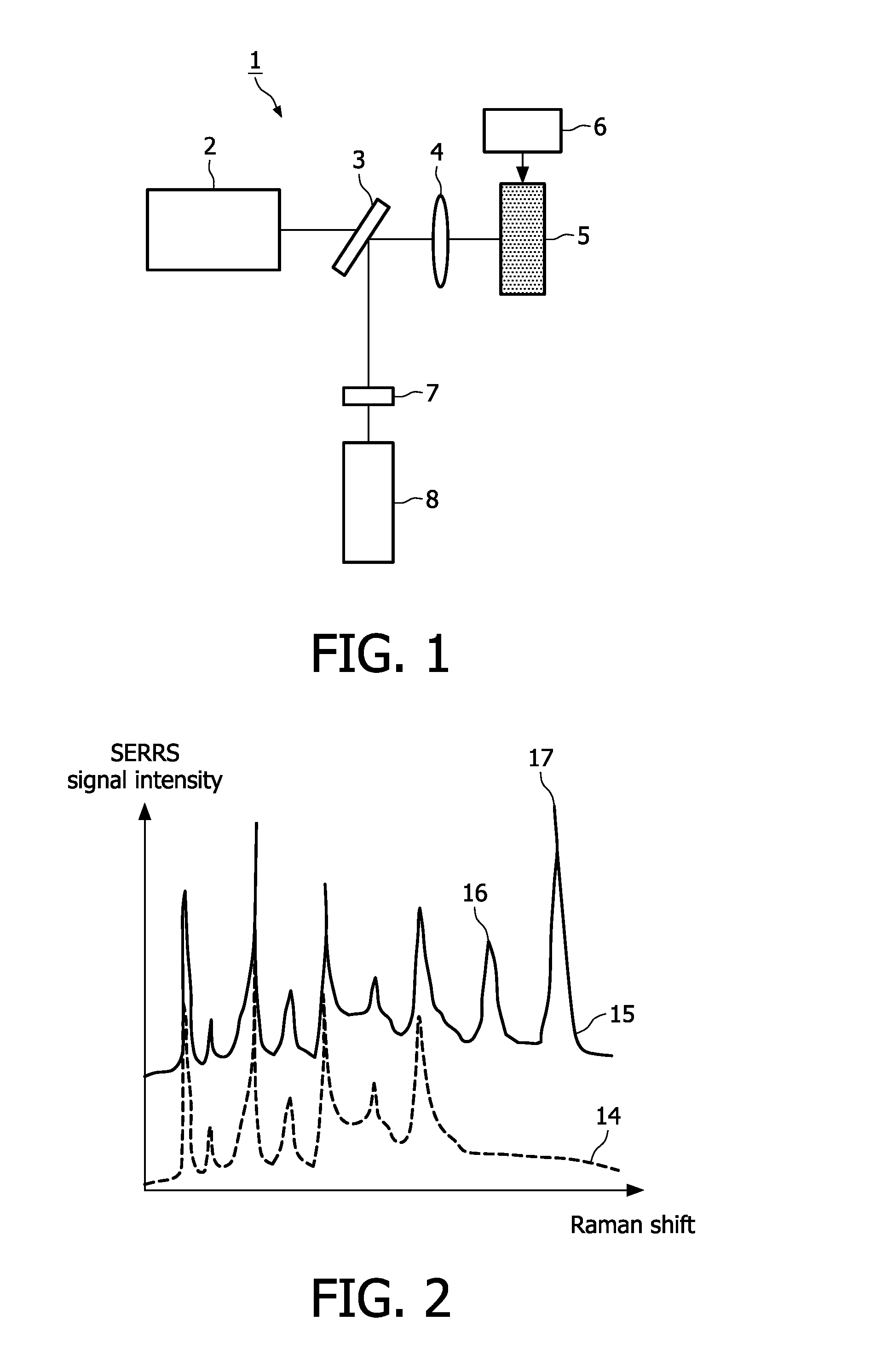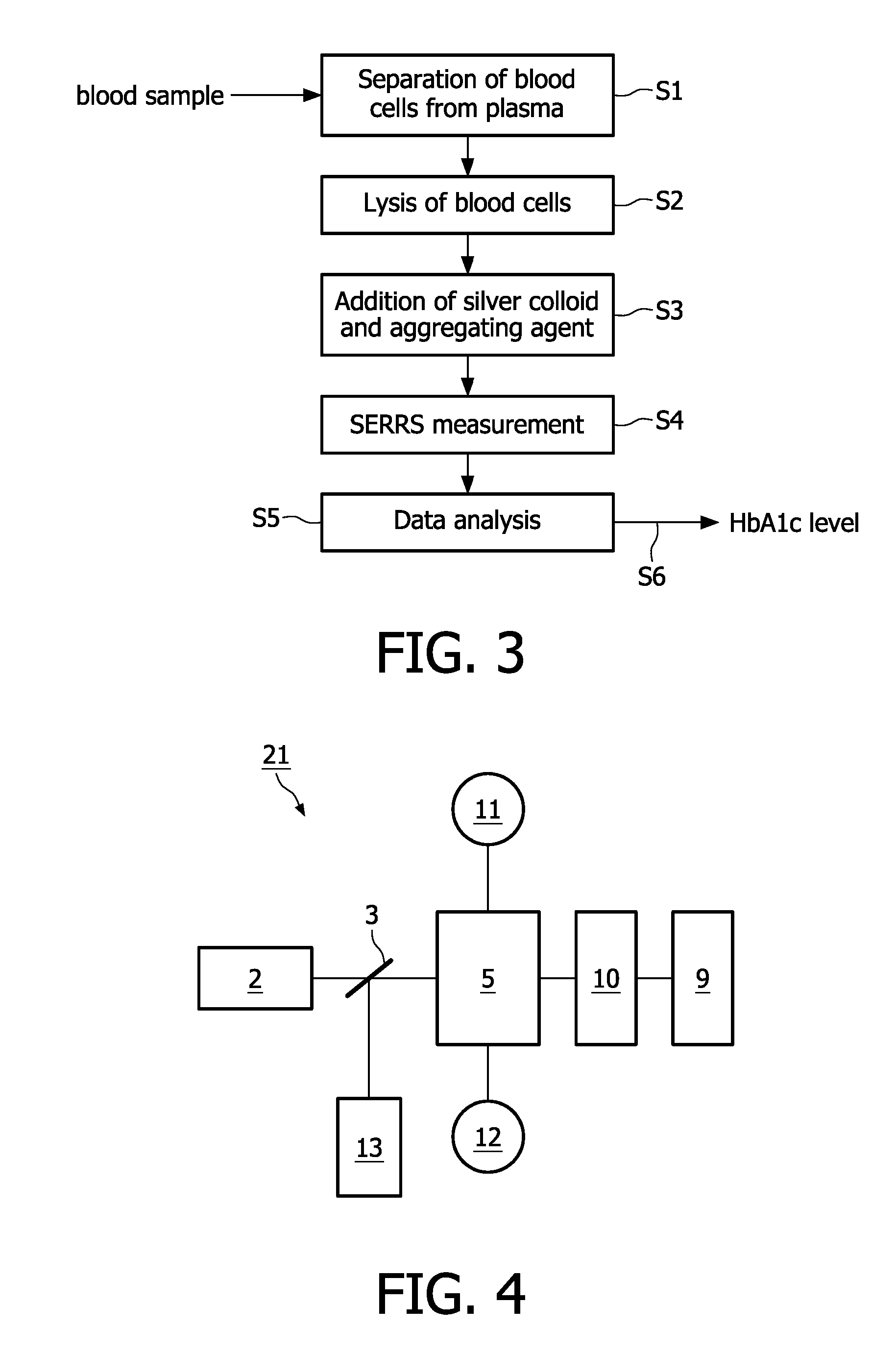Quantitative measurement of glycated hemoglobin
a quantitative measurement and hemoglobin technology, applied in the field of quantitative measurement of glycated hemoglobin, can solve the problems of difficult comparison of measurements made by different laboratories, inability to standardize methods over different laboratories, and inability to direct glucose detection index for long-term control. reliable, fast analysis of blood samples
- Summary
- Abstract
- Description
- Claims
- Application Information
AI Technical Summary
Benefits of technology
Problems solved by technology
Method used
Image
Examples
Embodiment Construction
[0042]The invention seeks to measure the concentration of HbA1c by Surface Enhanced Raman Scattering (SERS). Hemoglobin molecules are extracted from the blood sample and adsorbed to a roughened metal surface, and then submitted to the beam of a light source, such as a laser, in order to obtain SERS signals.
[0043]Raman spectroscopy is based on the following phenomenon: when a compound, called the analyte, is illuminated with an appropriate light source, the vast majority of reflected photons are emitted with an energy (frequency) identical to that of the incident light (Rayleigh scattering), while a small number of photons emerge with altered energy levels resulting from the phenomenon known as “Raman scattering”, due to vibrations of molecules. This scattering (also referred to as backscattering) of light by the molecules of the sample is detected and a molecular specific vibrational spectrum is obtained. Each peak of the spectrum corresponds to a particular bound for a component. A...
PUM
| Property | Measurement | Unit |
|---|---|---|
| diameter | aaaaa | aaaaa |
| wavelength | aaaaa | aaaaa |
| excitation wavelengths | aaaaa | aaaaa |
Abstract
Description
Claims
Application Information
 Login to View More
Login to View More - R&D
- Intellectual Property
- Life Sciences
- Materials
- Tech Scout
- Unparalleled Data Quality
- Higher Quality Content
- 60% Fewer Hallucinations
Browse by: Latest US Patents, China's latest patents, Technical Efficacy Thesaurus, Application Domain, Technology Topic, Popular Technical Reports.
© 2025 PatSnap. All rights reserved.Legal|Privacy policy|Modern Slavery Act Transparency Statement|Sitemap|About US| Contact US: help@patsnap.com



